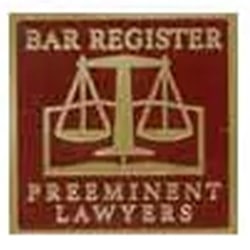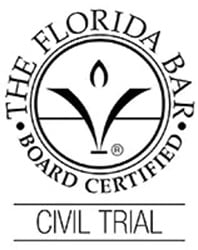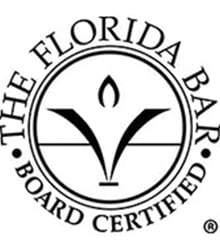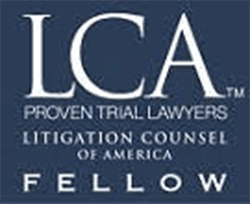If you’ve ever reviewed property records or a deed and stumbled across the phrase “et al,” you might have wondered what it means and why it’s there. Understanding what does et al mean in real estate is crucial for anyone buying, selling, or researching property ownership. This Latin abbreviation plays a significant role in legal documents and can affect how you interpret property records.
In this comprehensive guide, we’ll break down everything you need to know about “et al” in real estate contexts, from its basic definition to its practical implications for property owners and buyers.

Property Dispute Causing Stress? Let Us Help You
Property Dispute Causing Stress? Let Us Help You
Get your FREE & confidential case review todayWhat Does “Et Al” Mean?
“Et al” is short for the Latin phrase “et alii,” which translates to “and others” in English. You’ll find this abbreviation commonly used in academic citations, legal documents, and—most relevant to our discussion—real estate records and property deeds.
In real estate, “et al” appears on deeds and property records when there are multiple owners or parties involved in a transaction, but not all names are listed in the document you’re viewing. For example, if a deed lists “John Smith et al,” it means John Smith and other unnamed individuals have an ownership interest in the property.
How “Et Al” Appears on Property Deeds
When you see “et al” on a property deed, it’s essentially a shorthand notation. Instead of listing every single person who has an ownership stake in the property, the document names one or more primary owners followed by “et al” to indicate additional parties.
This abbreviation serves a practical purpose: it keeps documents concise while acknowledging that other parties exist. However, it’s important to understand that “et al” doesn’t diminish the legal rights of those unnamed individuals. Everyone included under “et al” has the same ownership rights as the named parties, assuming they’re listed on the original deed or title document.
Does Et Al Mean All Listed Parties Own the Property?
Yes, when “et al” appears on a deed, it indicates that all the parties—both named and unnamed—have an ownership interest in the property. The use of “et al” doesn’t create different classes of ownership; it’s simply a documentation shortcut.
For instance, if a property deed states “Maria Rodriguez et al,” Maria Rodriguez is explicitly named, but there are other co-owners whose names aren’t printed on that particular document. All these individuals share ownership rights according to how the property was originally titled—whether as joint tenants, tenants in common, or another ownership structure.
It’s worth noting that the specific ownership percentages and rights of each party would be detailed in the complete chain of title documents, even if they’re not visible in every subsequent record that uses “et al.”
How Do You Use Et Al in Real Estate?
In real estate practice, “et al” is typically used in several scenarios:

Property records and indexes maintained by county recorders frequently employ “et al” to keep their databases manageable.
When you search public records, you might see entries like “Robert Johnson et al to First National Bank,” indicating a mortgage or deed transaction.
Court documents and litigation involving real estate disputes use “et al” when multiple parties are defendants or plaintiffs. This makes case titles more readable while ensuring all parties are legally acknowledged.
Real estate professionals, title companies, and attorneys use “et al” as standard practice when preparing documents that reference properties with multiple owners. However, when it comes to actual transfers of ownership or new deeds, all parties typically must be listed by name to ensure clarity and legal validity.

Property Dispute Weighing on You? Let Us Help You
Property Dispute Weighing on You? Let Us Help You
Get your FREE & confidential case review todayHow Do You Remove Et Al From a Deed?
Removing “et al” from a deed requires recording a new deed that explicitly lists all property owners by name. This process isn’t about eliminating co-owners; rather, it’s about creating documentation that clearly identifies everyone with an ownership interest.
Here’s how the process typically works:

Prepare a new deed: Work with a real estate attorney or title company to draft a corrective deed, quitclaim deed, or warranty deed that lists all owners explicitly. This document should accurately reflect the current ownership structure.
Obtain necessary signatures: All current owners must sign the new deed. This is where complications can arise—if any co-owners have passed away, you may need to go through probate or estate proceedings.
Record the deed: File the new deed with your county recorder’s office. Once recorded, this becomes the updated public record, replacing references to “et al” with actual names.
This process can be complex, especially if there are multiple owners or if ownership has changed over time. Many property owners seek legal assistance to ensure everything is handled correctly and that the new deed accurately reflects ownership interests.
What Are the Disadvantages of Being on a Deed?
While owning property has obvious benefits, being named on a deed—whether explicitly or as part of “et al”—carries certain responsibilities and potential drawbacks:
Financial liability is perhaps the most significant concern. If you’re on a deed, you may be held responsible for property taxes, HOA fees, and any liens or judgments against the property, even if you don’t live there or benefit from it financially.
Credit implications can affect you if the property goes into foreclosure or if there are unpaid property-related debts. These issues can appear on your credit report and impact your ability to obtain loans.
Estate complications arise when someone on a deed passes away. Depending on how ownership is structured, the property might need to go through probate, potentially creating delays and expenses for heirs.
Difficulty selling or refinancing can occur when multiple owners are involved. All parties typically must agree to any sale or refinancing, which can be challenging if co-owners have different goals or can’t be located.
Exposure to lawsuits means that if one owner faces legal action, creditors might be able to place liens on the property or force its sale, affecting all co-owners.
These disadvantages don’t mean you should avoid property ownership, but they do highlight the importance of understanding what you’re agreeing to when your name goes on a deed.
What Is the Best Proof of Ownership of Property?
The recorded deed is universally recognized as the best and most definitive proof of property ownership. When a deed is properly executed, signed, notarized, and recorded with the county recorder’s office, it becomes part of the public record and serves as legal evidence of ownership.
However, several other documents can support or verify ownership:
Title insurance policies provide protection against ownership disputes and can serve as evidence of your insurable interest in the property.
Property tax records showing that you pay taxes on the property demonstrate a strong ownership claim, though they’re secondary to an actual deed.
A title report or abstract compiled by a title company traces the complete ownership history and can confirm your place in the chain of title.
Closing documents from when you purchased the property, including the HUD-1 or Closing Disclosure, provide additional proof of the transaction.
For the strongest protection, ensure your deed is properly recorded. An unrecorded deed, while still valid between the parties involved, doesn’t provide the same legal protection against third-party claims. If you’re uncertain about your ownership status—especially if you’re included in an “et al” reference—consider obtaining a current title report or consulting with a real estate attorney.

Property Dispute Causing Stress? Let Us Help You
Property Dispute Causing Stress? Let Us Help You
Get your FREE & confidential case review todayRelated Article(s)












